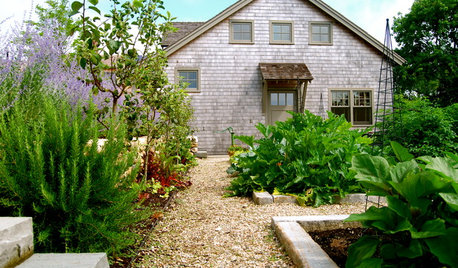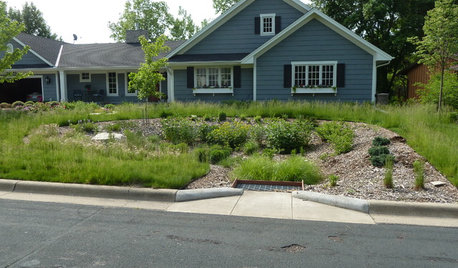Silt Soil?
coupongeorge
9 years ago
Related Stories

GARDENING GUIDESHave Acidic Soil in Your Yard? Learn to Love Gardening Anyway
Look to acid-loving plants, like conifers and rhododendrons, to help your low-pH garden thrive
Full Story
GARDENING GUIDESGardening Solutions for Heavy Clay Soils
What’s a gardener to do with soil that’s easily compacted and has poor drainage? Find out here
Full Story
GARDENING GUIDESGet the Dirt on Your Garden’s Soil
Understand how your soil supports your plants so you can ensure your garden’s success
Full Story
GARDENING GUIDESHow to Stop Worrying and Start Loving Clay Soil
Clay has many more benefits than you might imagine
Full Story
GARDENING GUIDESThe Simple Secret to Gardening Success
Learn the kinds of soil and a DIY type test to make sure you’re putting the right plant in the right place
Full Story
GARDENING GUIDESNew Ways to Think About All That Mulch in the Garden
Before you go making a mountain out of a mulch hill, learn the facts about what your plants and soil really want
Full Story
LANDSCAPE DESIGNHow to Design Your Landscape to Spread Water
Water that’s distributed widely will more readily soak into the ground
Full Story
EARTH DAYGrow a Beautiful Garden With Ecofriendly Greywater
Reducing home water waste means lower bills and a healthier planet. Here's how to set up a greywater home irrigation system that can help
Full Story
FARM YOUR YARDHow to Grow Vegetables in Containers
Get glorious vegetables and fruits on your patio with a pro’s guidance — including his personal recipe for potting mix
Full Story
GARDENING GUIDESInvite Mining Bees to Your Garden by Planting Their Favorite Plants
Look for mining bees (Andrena) pollinating woodland wildflowers in U.S. gardens this spring
Full StoryMore Discussions






Kimmsr
toxcrusadr
Related Professionals
Benbrook Landscape Architects & Landscape Designers · Fillmore Landscape Architects & Landscape Designers · Wheeling Landscape Architects & Landscape Designers · Brooklyn Center Landscape Architects & Landscape Designers · Maple Valley Landscape Contractors · Avocado Heights Landscape Contractors · Bell Gardens Landscape Contractors · Goodlettsville Landscape Contractors · North Haven Landscape Contractors · West Coon Rapids Landscape Contractors · Oxon Hill Landscape Contractors · Winter Gardens Landscape Contractors · Boynton Beach Decks, Patios & Outdoor Enclosures · Lakewood Decks, Patios & Outdoor Enclosures · Livingston Decks, Patios & Outdoor Enclosurespoaky1
toxcrusadr
djoyofficial
claireplymouth z6b coastal MA
poaky1